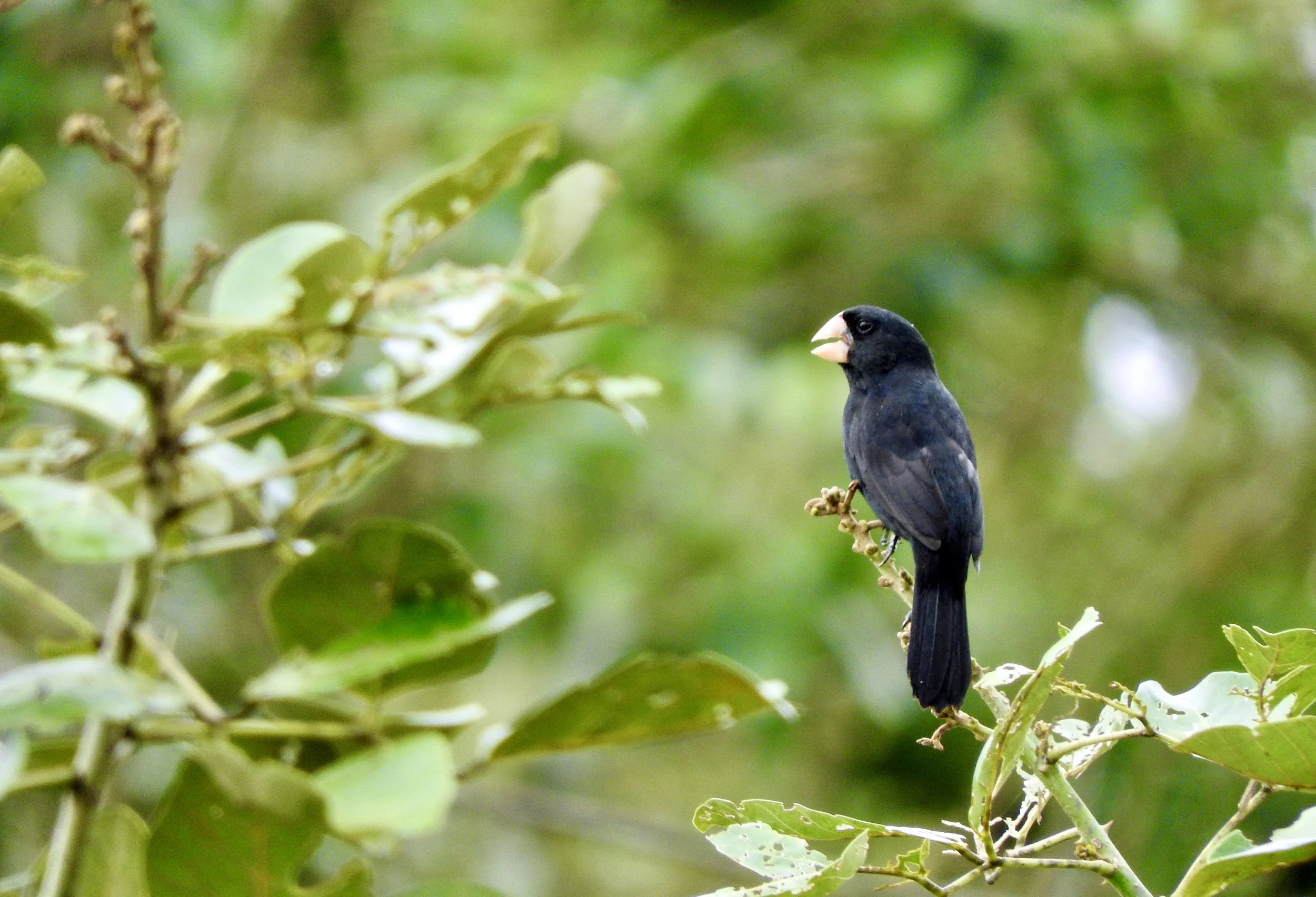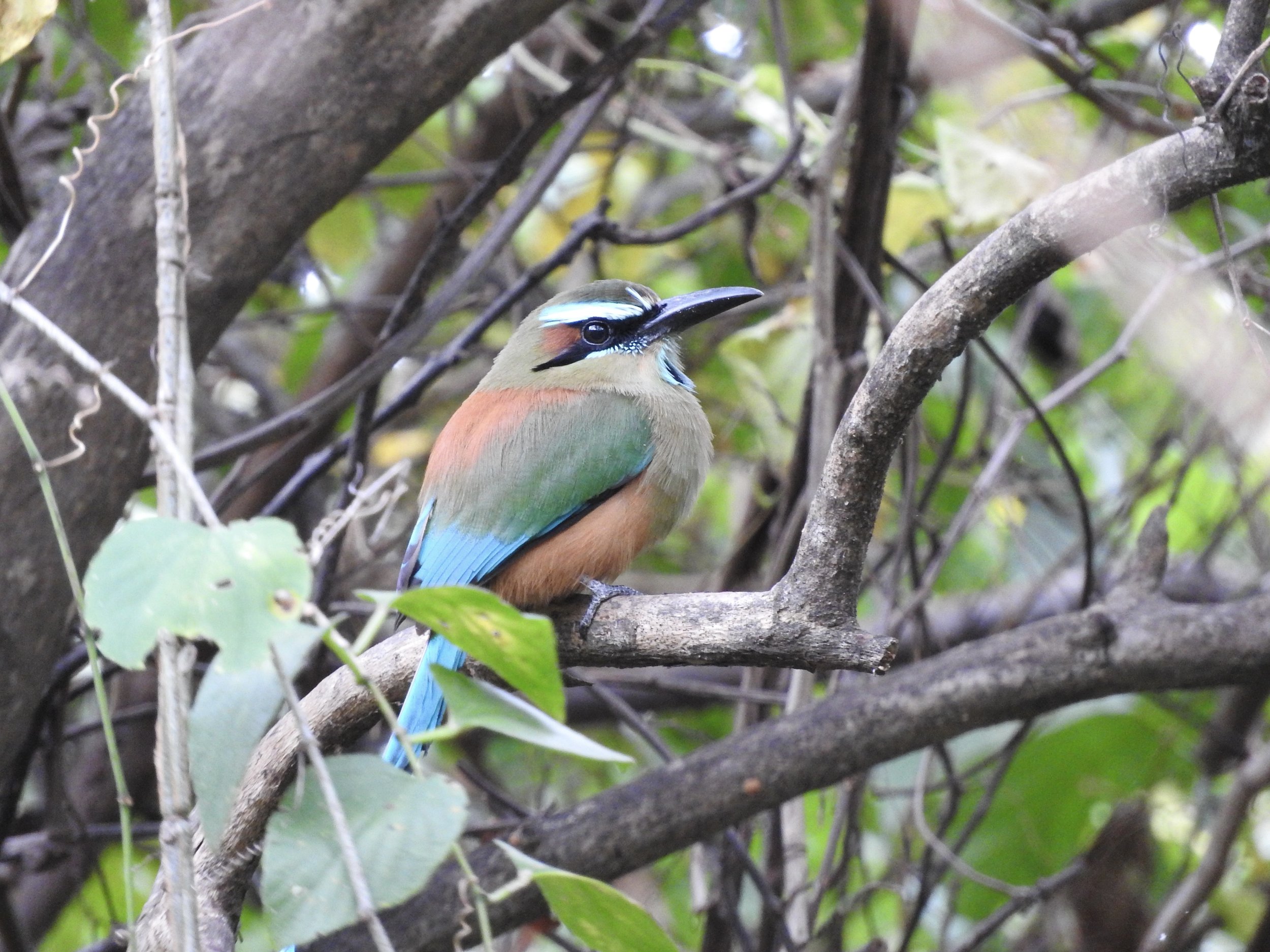Birding Costa Rica: Irazú Volcano
Volcano Junco
A trip to Irazú Volcano leads to excellent encounters with some of Central America’s rarest and most range-restricted species, in the eighth installment of Chris’s Costa Rica birding diary.
After my most comfortable night's sleep of the entire trip at Hotel Quelitales, it was time for the final full day of our trip with the ICT (Instituto Costarricense de Turismo). Today's targets included a couple of the rarest and hardest-to-see birds in Central America, so there was plenty to look forward to and no time to mourn the end of the trip.
We started with a gentle early morning birding session around the grounds of Quelitales. Beyond the cabins, there's a beautiful waterfall cascading down into a pool, surrounded by flowers and hummingbird feeders, and that's where the group met a little after 5 am. The owners have set up a small feeding station where they put down corn for species like Sooty-faced Finch, Chestnut-capped Brushfinch, and White-named Brushfinch. A Scaled Antpitta also sometimes comes to feed, but it chose not to on this particular morning. No matter: a Middle-American Leaftosser gave us excellent views along the stream, while a Green-fronted Lancebill hawked for insects above the pool.
The waterfall at Hotel Quelitales
As I mentioned in a previous blog, Luciano from Brazil joined the group late. As such, he'd missed a lot of good lifers on the first four days. However, this was proving to be quite a fun challenge for the rest of the group, as birds we'd already registered took on new meaning as megas for Luciano. So Black-bellied Hummingbird and Coppery-headed Emerald were two welcome additions to the morning list.
After a tasty breakfast overlooking the busy feeders at Quelitales, we jumped onto the bus and set off in the direction of Irazú Volcano, our ultimate destination for afternoon and night birding. Along the road, we stopped at a large kettle of raptors and swifts and added Hook-billed Kite, Short-tailed Hawk, and Vaux's Swift to the trip list.
Shortly after that raptor stop, we pulled up in the main square of a little town called Paraiso. We were unsure what we were stopping for until Diego mentioned that we were "twitching" day roosts of Tropical Screech-Owl and Barn Owl. We were all quite tickled by the prospect of twitching a Barn Owl, but we needed it for our rapidly growing trip list, so why not?! The pair of screech-owl was perched in a short tree in the main square, while we quickly located the Barn Owls perched in the eaves of the church. Owls successfully twitched, we pressed on for Irazú.
Since the crater area of the volcano is a National Park, it's required to book a time slot to visit. Our slot wasn't until 2 pm, so we stopped off for birding and lunch at a roadside restaurant on the volcano's flanks, Noche Buena. A small patch of forest by the road contained a female Resplendent Quetzal, Flame-throated Warblers, and my lifer Black-capped Flycatcher. We parked the bus at Noche Buena and headed up the hill behind, searching for another massive target species: Maroon-chested Ground Dove.
These scarce and erratic doves are unpredictable and most often seen at seeding bamboo. However, a group of them had been reported in the mustard seed fields above Noche Buena since June. Diego told us that they were showing much less now, but it was worth a try. So up the hill we went.
Birding along the woodland edges was productive. We got good views of Fiery-throated, Volcano, Talamanca Hummingbirds, and even a lovely Hermit Warbler, a rare migratory species for Costa Rica. But, annoyingly, a small group of Buffy-crowned Wood-Partridges calling from the undergrowth proved elusive. Jonathan and Julian got fleeting views - a big one for Julian as he'd dipped the species three times previously - but I couldn't get onto them from where I was standing.
The fields above Noche Buena where we searched for Maroon-chested Ground Dove
Time was getting on, and we needed to get back down the hill for lunch. Diego Calderon called from further up the trail as we hiked back down. He'd spotted a small group of ground doves! We all crept towards an isolated patch of trees, trying not to disturb these notoriously flighty birds. Eventually, a stunning male Maroon-chested Ground Dove flew onto an exposed branch. What a handsome bird! Its maroon chest and pale gray, almost white, head shone in the midday sun before it flew up into a tall tree. We watched it for a few more minutes before the group flew off into a distant tree.
Elated from that last-minute sighting, we ate a quick lunch and headed off to the crater of Irazú. We arrived to a lot of clouds and a strong wind, but what could we expect at almost 3,400 masl! We got our main target the moment we stepped off the bus: a hardy little Volcano Junco was perched obligingly on a bush by the parking lot. It was relaxed, and there was even time for the digiscopers to set up and get excellent video. Volcano Junco is a cracking little bird; its yellow eyes and black mask give it a faintly devilish appearance. When it fixes you with those glowing eyes, it's hard not to detect a hint of malice. But I guess I might be a bit pissed off if I lived in such harsh conditions.
Volcano Junco at Irazú Volcano. It definitely looks mean, right?!
Main target down, we enjoyed exploring Irazú as the sun finally started to come out. A Cooper's Hawk played in the wind over the crater, and we spotted several Large-footed Finches in the undergrowth. However, the other big target species, Peg-billed Finch, sadly remained elusive. The landscapes were fantastic; the crater lake had a lunar quality, making it unlike anywhere else we'd visited in Costa Rica. For such a small country, it really is spectacularly diverse. After messing around with some fun group photos, we headed out of the park, birding along the roadside as we went. An obliging Timberline Wren was another good lifer along this section of road.
Our group enjoying some sunshine at the crater of Irazú Volcano (Photo: José Castaño)
We had an important appointment on the edge of the National Park at dusk, so we casually birded along the road for a while, killing time even as the clouds descended and the rain swept in.
At about 6 pm, a car pulled up alongside the bus, and we met Ernesto M. Carman and Paz A. Irola, who would be helping us to locate a species that is extremely close to their hearts, the Unspotted Saw-whet Owl. This tiny, adorable owl is extremely poorly-understood and rare in its range from southern Mexico into northern Panama and is a major target for birders in Costa Rica.
Ernesto and Paz run the Unspotted Saw-whet Owl Project (more on that in my recent blog post here) and perhaps understand this little owl better than anyone alive. So it was a real privilege to join them on one of their regular monitoring trips. After giving us a thorough introduction to their work, we set off to a nearby owl territory.
Conditions weren't ideal for owling- it was windy, overcast, and freezing - and at first, it seemed like we would draw a blank. We visited two different territories and heard nothing. Undeterred, Ernesto led us down a ravine towards a third possible territory.
Suddenly, we heard the owl calling faintly in the distance. As we got closer, Ernesto instructed us to ready cameras and scopes: he would illuminate the little bird for no more than a minute. He shone his flashlight into the trees, and there it was: a tiny Unspotted Saw-whet Owl perfectly framed in the branches, softly hooting away. One of the rarest owls in the Americas, right there in front of us. What a way to end the day!
Our Unspotted Saw-whet Owl (Photo: Diego Quesada)
Ernesto and Paz continued into the night to search for new territories while we headed back to Quelitales for the night. The trip was coming to an end. But there was still an hour or two at dawn the next day, and we had a date with a ground-sparrow.
















